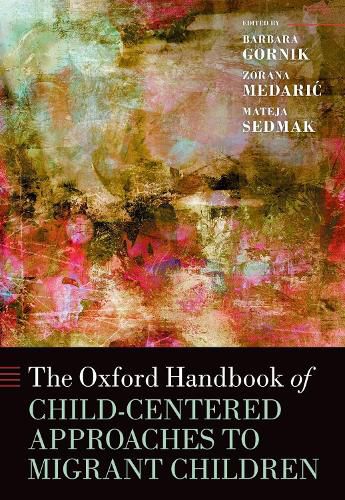Readings Newsletter
Become a Readings Member to make your shopping experience even easier.
Sign in or sign up for free!
You’re not far away from qualifying for FREE standard shipping within Australia
You’ve qualified for FREE standard shipping within Australia
The cart is loading…






The Oxford Handbook of Child-Centered Approaches to Migrant Children aims to bring child-centered approaches as applied to researching child migration to the forefront of academic and policy debates on this topic. The chapters included in this volume cover the key debates in the field and provide important insights about recent developments in areas that inform use of the child-centered approach. The concept of the child-centered approach is widely recognized in the social sciences and humanities, including sociology, anthropology, education, psychology, social policy, and law. This approach, whether applied in research, policymaking, or practice, is based on children's agency and participation and focuses specifically on their experiences, perspectives, and voices. To this end, the child-centered approach privileges children when designing research questions, providing descriptions, making interpretations, and carrying out analyses. By pairing the child-centered approach with concepts such as agency, voice, well-being, participation, and intergenerational justice that are used in contexts relevant to migrant children, this Handbook presents the major theoretical premises, epistemological approaches, and models used in different social settings and spheres, including research, education, and the political realm. It also describes the experiences of researchers in applying child-centered methods and approaches to their work and highlights the importance of ethical considerations and continuous reflexivity in relation to child-centered knowledge production. The Handbook additionally highlights the complexity and diversity of transnational childhoods from around the globe, as well as presenting the experiences of different migrant groups, including undocumented and irregular migrants, asylum seekers, economic migrants, and left-behind children. Lastly, it examines the fundamental legal principles and aspects of participation in relation to specific procedures, policy areas, and legal categories relevant to migrant children.
$9.00 standard shipping within Australia
FREE standard shipping within Australia for orders over $100.00
Express & International shipping calculated at checkout
The Oxford Handbook of Child-Centered Approaches to Migrant Children aims to bring child-centered approaches as applied to researching child migration to the forefront of academic and policy debates on this topic. The chapters included in this volume cover the key debates in the field and provide important insights about recent developments in areas that inform use of the child-centered approach. The concept of the child-centered approach is widely recognized in the social sciences and humanities, including sociology, anthropology, education, psychology, social policy, and law. This approach, whether applied in research, policymaking, or practice, is based on children's agency and participation and focuses specifically on their experiences, perspectives, and voices. To this end, the child-centered approach privileges children when designing research questions, providing descriptions, making interpretations, and carrying out analyses. By pairing the child-centered approach with concepts such as agency, voice, well-being, participation, and intergenerational justice that are used in contexts relevant to migrant children, this Handbook presents the major theoretical premises, epistemological approaches, and models used in different social settings and spheres, including research, education, and the political realm. It also describes the experiences of researchers in applying child-centered methods and approaches to their work and highlights the importance of ethical considerations and continuous reflexivity in relation to child-centered knowledge production. The Handbook additionally highlights the complexity and diversity of transnational childhoods from around the globe, as well as presenting the experiences of different migrant groups, including undocumented and irregular migrants, asylum seekers, economic migrants, and left-behind children. Lastly, it examines the fundamental legal principles and aspects of participation in relation to specific procedures, policy areas, and legal categories relevant to migrant children.